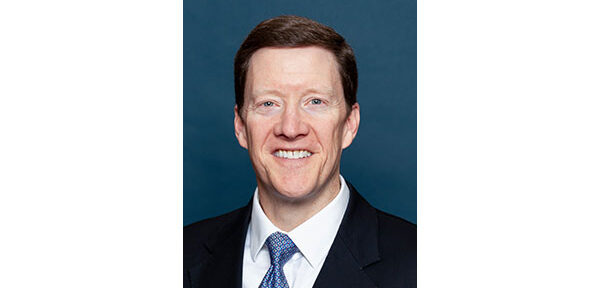
Ranked Choice Voting in the News
Ranked-choice voting (RCV) has received growing attention in recent elections. Just last month it was used in the New York City Democratic mayoral primary, where voters could rank up to five candidates in order of preference. If no candidate received more than 50 percent of the first-choice votes, the candidate with the fewest votes was eliminated in successive rounds, with those votes redistributed to the next choice on each ballot. That process continued until Zohran Mamdani secured a majority vote and was declared the Democratic nominee on July 1.
Why the growing interest in ranked-choice voting? A major reason is that it eliminates the need for costly runoff elections, which often suffer from low voter turnout. Rather than holding a separate election weeks later, RCV allows voters to rank candidates on a single ballot. Many see this as a fairer approach, since the eventual winner typically has broader support—even if not as a first choice, then as a second or third.
Cities, counties, and even some states (Maine and Alaska) have adopted or are exploring RCV. I’m told that New York City also uses RCV in elections for City Council, borough president, comptroller, and public advocate.
What Robert’s Rules of Order Says
Parliamentarians have known about systems where voters express a preference among nominees for a long time. Robert’s Rules of Order calls this type of system “preferential voting.” I touch on preferential voting in both of my recent books on Robert’s and running effective meetings: Robert’s Rules of Order Fast Track and Notes and Comments on Robert’s Rules, Fifth Edition.
There isn’t just one model of ranked choice voting, but I still get asked what method is recommended by Robert’s Rules of Order. As with many things meeting-related, Robert’s really doesn’t care. Instead, Robert’s describes a process but allows options so that an organization can choose the method to best fit its specific needs, typically by language in the bylaws or a special rule. Interestingly, the term “ranked choice” doesn’t appear at all in the 714 pages of Robert’s Rules of Order Newly Revised (12th Edition). As noted above, “preferential voting” is the umbrella term that covers multiple systems where voters rank candidates in order of preference, and second or lower choices may be considered if no one gets a majority at first.
What Robert’s Rules does strongly support is “majority” voting, meaning more than half of the votes cast. “A plurality that is not a majority never chooses a proposition or elects anyone to office except by virtue of a special rule previously adopted.” RONR (12th ed.) 44:11. “A rule that a plurality shall elect is unlikely to be in the best interests of the average organization.” RONR (12th ed.) 44:11. That said, voting processes for public office and many nonprofit associations frequently allow a candidate to win with just the most votes—even if they don’t receive a majority. That can lead to unexpected results that differ from what would occur in a one-on-one election.
Preferential voting can eliminate multiple rounds of voting. That saves time and money, may give minority groups a more likely chance of representation, and works well when there are many candidates. But the process can also be confusing, and sometimes the results aren’t what people expect. A takeaway is that “preferential voting” or “ranked choice voting” as used by the media isn’t ONE method, but many. So when talk turns to alternative voting methods, it’s important to consider many aspects of the vote, such as how people vote, how are choices ranked, how are less popular options eliminated from future votes, are those eliminated votes allocated elsewhere, etc. Because no one method works for all situations, it’s important to be aware of some different preferential voting concepts as well as their strengths and weaknesses.
Some Types of Preferential Voting
Advocates of voting reform, mathematicians, and a few parliamentarians who write about ranked choice voting know far more about nuances of various systems than I do. However, there have been some excellent articles on preferential voting, including an April 1980 article by Rachel T. Hare-Mustin in the Parliamentary Journal (reprinted in the July1995 PJ) from the American Insititute of Parliamentarians. In Preferential Voting Systems, she explains some possible options (below in alphabetical order):
American System. If no candidate receives a majority of first-choice ballots, the lowest candidate is dropped. Second-choice votes are then added to the count. This process repeats with third-choice votes until someone is elected.
Bucklin or Grand Junction. Voters rank a first and second choice, plus an optional “other” group. If no one gets a majority from the set of first choices, second choices are added, and then “other” votes if needed. But giving equal weight to lower choices can hurt a voter’s top pick.
Cumulative Voting. Voters get a fixed number of votes and can divide them however they want—even giving all to one candidate. This shows strong support but may not reflect broad preferences.
Limited Voting. Voters choose fewer candidates than there are open seats. This can help minority groups win a seat, but the results aren’t always proportional.
Preferential Vote Majority (Alternative Vote). Votes are transferred until someone receives a majority. After one person is elected, ballots are reused for the next open seat, skipping choices already counted.
Single Transferable Vote (STV). Voters rank candidates. The candidate with the fewest votes is eliminated, and those ballots go to the next lowest vote recipient. This continues until enough winners are selected.
STV with Quota (Hare System). A vote “quota” is set based on the number of voters and seats. Candidates who reach the quota are elected, and any extra votes are passed on to the next preferences. This system aims for fairness but can feel random.
Weighted Voting. Voters rank candidates, and each rank gets a point value. Candidates with the highest total points are elected. Some people try to game the system by only ranking their top pick, known as “bullet voting.” Some groups require voters to rank all candidates, which can be difficult if voters don’t know all the candidates.
West Australian or Hare-Ware. If no one receives a majority vote, only the top two remain. All other candidates are dropped, and their votes go to the remaining two based on next preferences.
Each voting method has pros and cons. The best choice for a particular situation likely depends on any statutory or governing document requirements and what the group cares most about—fairness, simplicity, or wide representation. Looking at real election results can help show which system works best in practice.
Jim Slaughter is an attorney, Certified Professional Parliamentarian, Professional Registered Parliamentarian, and past President of the American College of Parliamentary Lawyers. He is author of four books on meeting procedure, including two updated for the latest Robert’s Rules: Robert’s Rules of Order Fast Track and Notes and Comments on Robert’s Rules, Fifth Edition. Both books have been selected as “Editor’s Picks” by Publisher’s Weekly. Many free charts and articles on Robert’s and meeting procedure can be found at www.jimslaughter.com.


